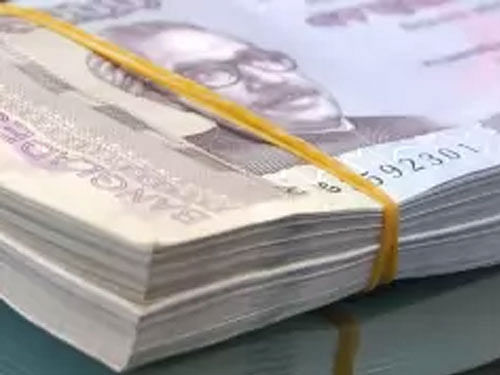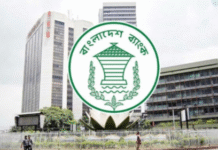
Bangladesh is going to plunge into a ‘newer depth of debt’, both from internal and external sources, in the coming days as it is spending additional money to salvage the economy hit hard by the novel coronavirus pandemic, according to an analysis.
So far, the government has announced a set of COVID-19 recovery packages worth US$ 13.25 billion, which is equivalent to 4.03 per cent of the GDP, aiming to revitalise the country’s economic activities and production system.
The government has projected that the debt status of the country will be 38.3 per cent of the total GDP in the 2022-23 fiscal year.
The document also said proper mixing of loans from internal and external resources will play an important role in reducing financing expenditure and lowering the outstanding debt status from its sliding up
The country’s debt status in 2021-22 fiscal will stand at Tk 13,531.5 billion which will be 37.8 per cent of the total GDP. Of the amount, internal sources will contribute Tk 8408.6 billion, which is 62.1 per cent of the amount, while external sources will contribute Tk 5122.9 billion, which is 37.9 per cent.
In the current fiscal, the debt status stands at Tk 11,678.3 billion with 36.8 per cent of the GDP. Internal sources are contributing Tk 7355.5 billion, which is 63 per cent, and external sources are contributing Tk 4322.8 billion, which is 37 per cent.
The revised status of the previous fiscal was Tk 9996.9 billion and it was 35.6 per cent of the GDP. Internal sources injected Tk 6235.8 billion, which was 62.4 per cent, while external sources gave Tk 3761.1 billion, which was 37.6 per cent.
The amount was Tk 8419.1 billion in 2018-19 fiscal, which was 33.2 per cent of the GDP. Internal sources contributed Tk 5338.1 billion (63.4 per cent) and external sources Tk 3081 billion (36.6 per cent).
The document mentioned that there is a possibility for significantly lower interest rates of loans worldwide during a mid-term period. It referred to the COVID-19 pandemic and the negative growth around the world for the dismal scenario.
So, the deficit financing from outer resources would be comparatively cheap.
The document also said proper mixing of loans from internal and external resources will play an important role in reducing financing expenditure and lowering the outstanding debt status from its sliding up.
Various economic sectors, including export-oriented industries, small, medium and cottage industries, agriculture, fish farming, poultry and livestock have been brought under these incentive packages.
Among the packages, Tk 30,000 crore has been allocated for providing working capital facility to the affected industries and services sector organisations, Tk 20,000 crore stimulus package for supplying working capital to the small, including cottage industries) and medium industrial enterprises.
A total of Tk 2,500 crore was allocated for Palli Sanchay Bank, Karmasangsthan Bank, Probsahi Kalyan Bank and Palli Karma Sahayak Foundation to help the youth and expatriates who lost their jobs for the pandemic.
Another amount of Tk 5,000 crore has been allocated for the farmers at only four per cent interest to offset the fallout of the COVID-19 in agriculture and the government will waive Tk 1,840 crore bank interests of the people affected badly by the nationwide shutdown enforced to contain the coronavirus pandemic.









